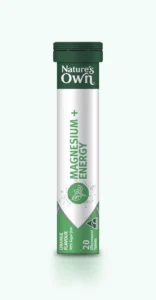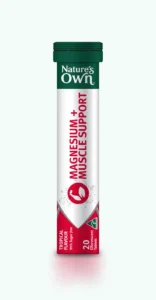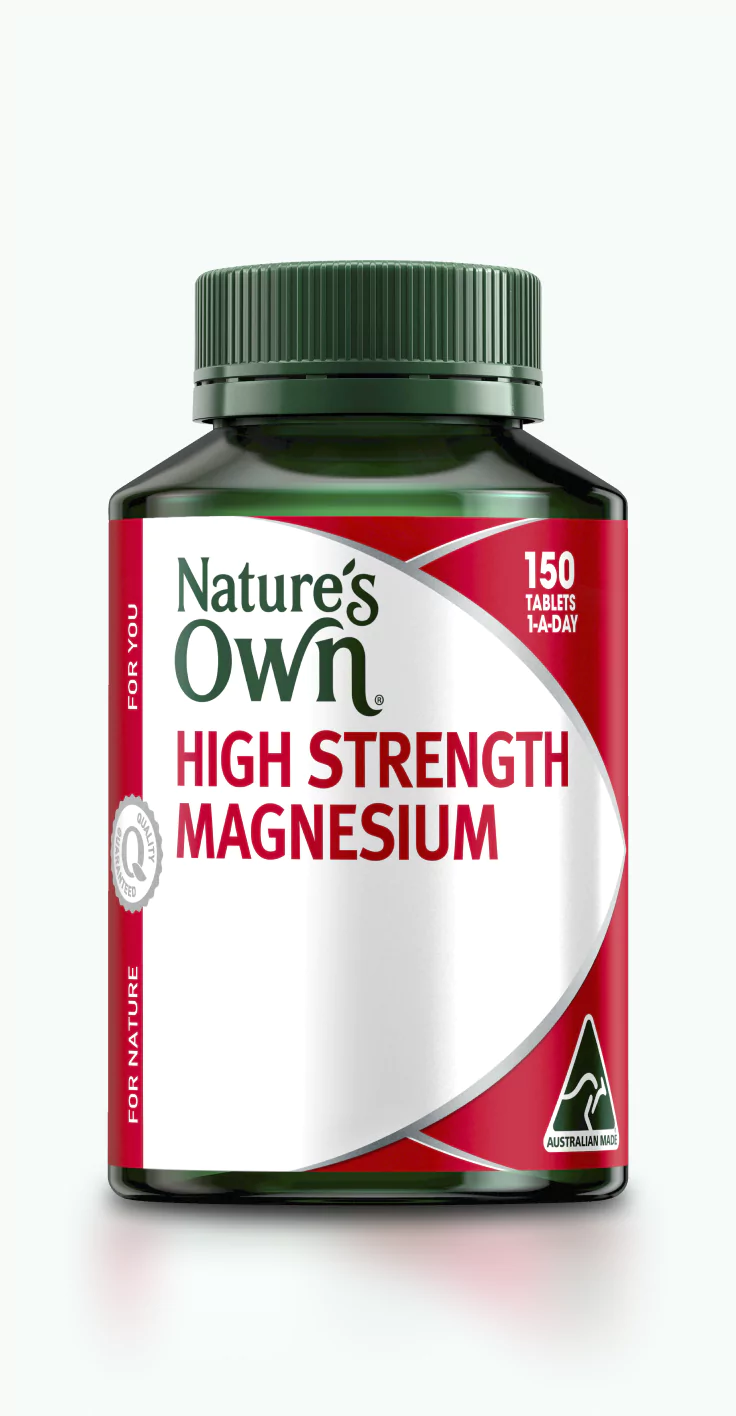
Magnesium: The mineral that wants you to succeed
In this article
How does magnesium help your body?
While most of your magnesium is found in bone and muscle, it’s needed for your whole body to function. Magnesium is at its busiest inside your cells.
Magnesium gets its helper reputation by:
- Metabolising the protein in your diet1
- Supporting healthy blood glucose1.
- Making it easier to absorb other nutrients including the calcium and to activate vitamin D1.
- Supporting healthy muscle function2 and relieving muscle spasms and cramps3.
- Supports nerve conduction.
- Helping the mitochondria in your cells convert the food you eat into energy1.
- Support heart health4.
Are you getting enough magnesium?
One in three Australians did not meet their requirements for Magnesium5. While a diet high in processed foods is a common reason for this, other factors include:1
- Eating a diet high in meat, wheat and sugar — you need your veg!
- Cooking and boiling vegetables, which can decrease their magnesium content. Leafy green salads are the way to go.
- Having low Vitamin D levels. This can inhibit your magnesium absorption.
- Medications—some medications can decrease your magnesium absorption. Check with your doctor or pharmacist if you’re concerned about your medication and magnesium.
- Increased sweating.
- Times of increased need, such as pregnancy and stress. If you’re pregnant or under a lot of stress, chat to your healthcare provider for advice.
- Ageing—your ability to absorb magnesium can also decrease as you age.
So while we sometimes let our diet slip or we’re too busy to cook, everyone can make simple changes to increase their magnesium intake.
How to get more magnesium in your diet
Getting more magnesium in your diet is super easy and the great thing is that high magnesium foods are also rich in fibre, antioxidants and other nutrients. Boost magnesium in your diet by eating:1
- Nuts & Seeds: Add your favourite nuts and seeds to a salad or a trail mix. Include hemp seeds, pumpkin seeds, flaxseeds and Brazil nuts.
- Legumes: Legumes like kidney beans, chickpeas, black beans and lentils are a delicious source of magnesium.
- Green vegetables: Green vegetables, especially spinach are an important source of magnesium. Spinach and broccoli are super nutritious and can be used in everything from salads to pasta sauces. Avocado is another great source of magnesium you could add to a salad.
- Protein rich foods: Yoghurt, salmon and roast chicken breast are protein-rich foods that also contain magnesium.
Can you get magnesium in supplement form?
Magnesium is available as a supplement and you can find it in a tablet, capsule and powder. Read more about Nature’s Own range of magnesium products here.
So next time you’re grocery shopping and asking yourself ‘what’s for dinner?’ remember to add plenty of leafy greens, nuts, seeds and legumes to your trolley and let magnesium-rich foods nourish, nurture and safeguard your health.
References
[1] Schwalfenberg GK, Genuis SJ. The Importance of Magnesium in Clinical Healthcare. Scientifica (Cairo). 2017;2017:4179326. doi: 10.1155/2017/4179326. Epub 2017 Sep 28. PMID: 29093983; PMCID: PMC5637834.
[2] https://webprod.hc-sc.gc.ca/nhpid-bdipsn/atReq?atid=multi_vitmin_suppl&lang=eng”MULTI-VITAMIN/MINERAL SUPPLEMENTS MONOGRAPH (hc-sc.gc.ca)
[3] Swaminathan R. Magnesium Metabolism and its Disorders. Clin Biochem Rev 2003; 24: 47-66
[4] Shechter, M., et al., Comparison of magnesium status using X-ray dispersion analysis following magnesium oxide and magnesium citrate treatment of healthy subjects. Magnes Res, 2012. 25(1): p. 28-39
[5] Australian Health Survey: Usual Nutrient Intakes, 2011-12 |abs.gov.au


